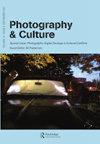Sheltering the Ghosts? Digitized Photographs of Political Victims and World War II Veterans on Russian Online Databases
IF 0.3
4区 艺术学
0 ART
引用次数: 2
Abstract
Abstract In this article I consider Russian online databases that collect, digitize and organize film-based photographs showing Russian victims and participants of the twentieth-century political cataclysms, primarily World War II (WWII) and Stalin’s political terror. Most of these photographs are pre-WWII portraits from private photographic collections and family albums. The article focuses on their transformation into heritage assets which arguably occurs once they become publicly accessible through inclusion in online databases created by politically-motivated organizations such as the Memorial society, the Sakharov Center, Immortal Regiment, Immortal Barrack and Immortal Regiment of Russia. Through discussion of the structures of the databases, analysis of the ways in which they display the photographs, and comparison between them, the article shows that the digitization of the photographs is able to offer political presence to missing people through the multiplication and maintenance of their appearances in the public sphere. This presence is used in two different ways. First, the digitization of the photographs discussed here has enabled liberals in Russia to use them for the purpose of commemoration, which has turned them into a form of an online memorial to the victims of political cataclysms. At the same time, the digitized portraits of WWII veterans have been used by the Immortal Regiment of Russia for what can be called “the political mobilization of the dead.”庇护幽灵?俄罗斯在线数据库中政治受害者和二战老兵的数字化照片
摘要在这篇文章中,我考虑了俄罗斯的在线数据库,这些数据库收集、数字化和组织基于电影的照片,这些照片显示了20世纪政治灾难的俄罗斯受害者和参与者,主要是第二次世界大战和斯大林的政治恐怖。这些照片大多是二战前私人摄影集和家庭相册中的肖像。这篇文章聚焦于它们向遗产资产的转变,可以说,一旦它们被纳入由纪念协会、萨哈罗夫中心、不朽团、不朽兵营和俄罗斯不朽团等出于政治动机的组织创建的在线数据库,就可以公开访问。通过讨论数据库的结构,分析它们显示照片的方式,以及它们之间的比较,文章表明,照片的数字化能够通过增加和保持失踪人员在公共领域的形象,为他们提供政治存在。这种存在有两种不同的使用方式。首先,这里讨论的照片的数字化使俄罗斯的自由主义者能够将其用于纪念,这使它们成为一种在线纪念政治灾难受害者的形式。与此同时,二战老兵的数字化肖像被俄罗斯不朽军团用于所谓的“死者政治动员”
本文章由计算机程序翻译,如有差异,请以英文原文为准。
求助全文
约1分钟内获得全文
求助全文

 求助内容:
求助内容: 应助结果提醒方式:
应助结果提醒方式:


